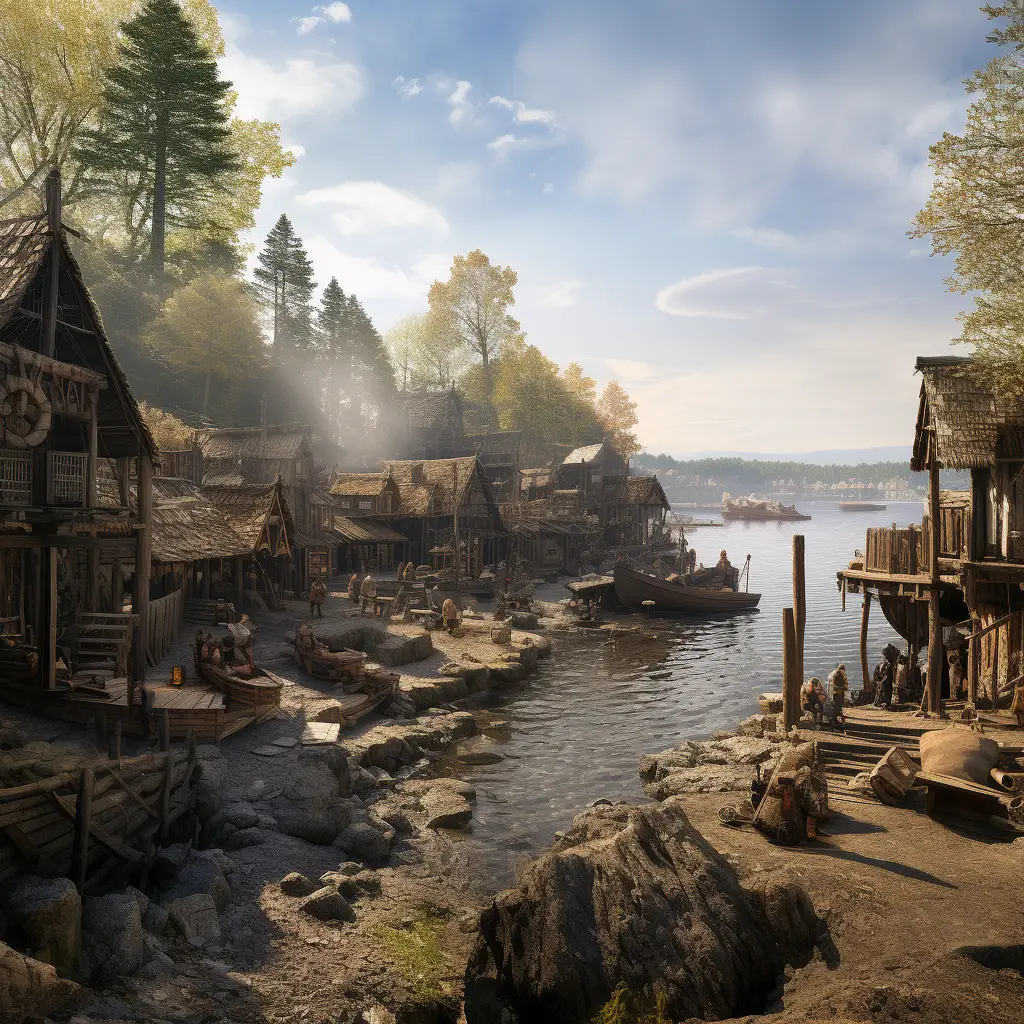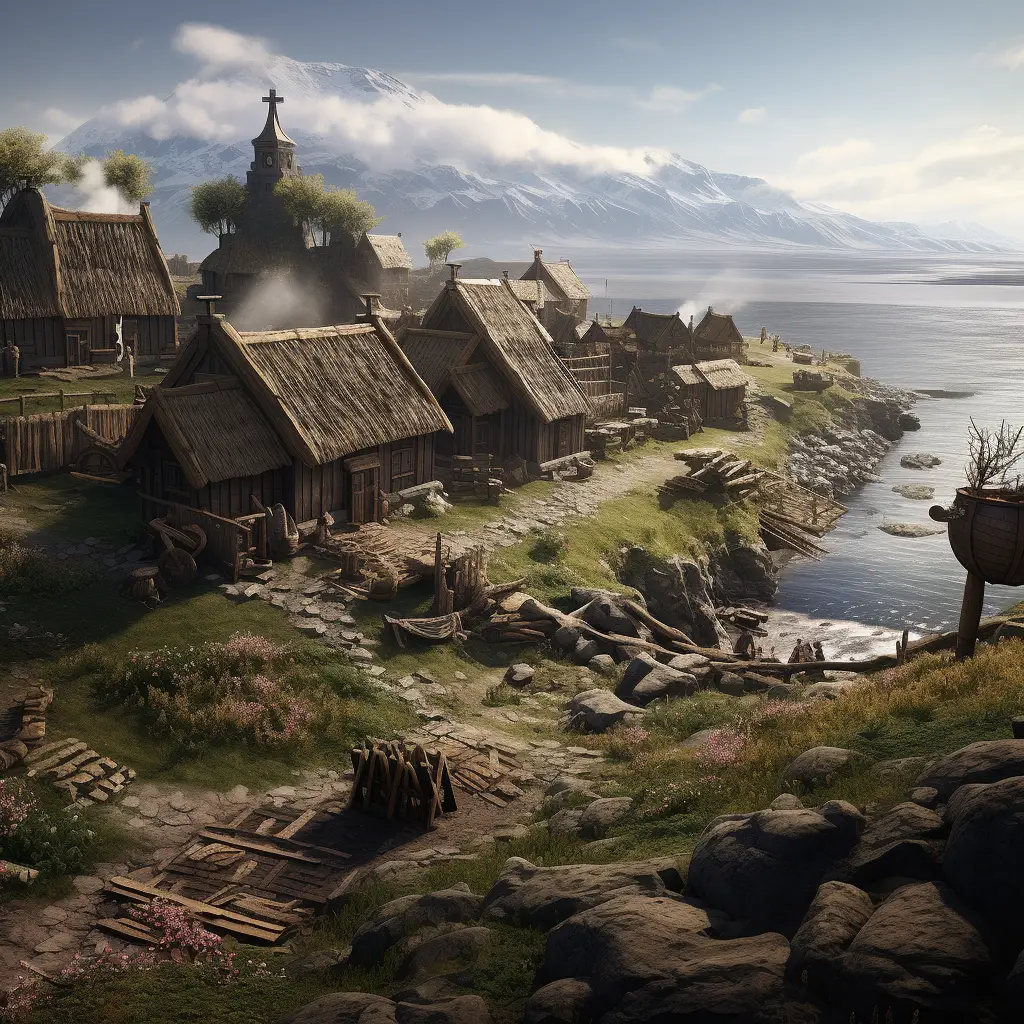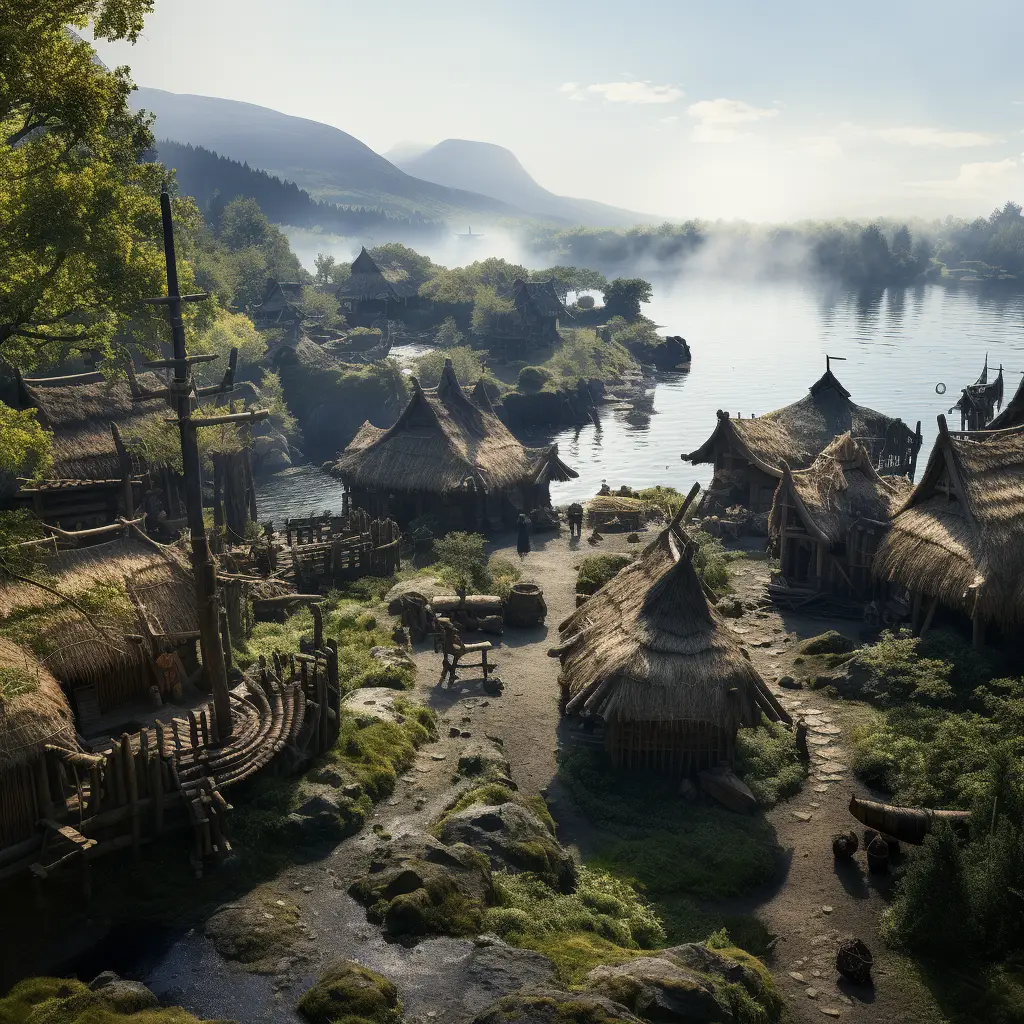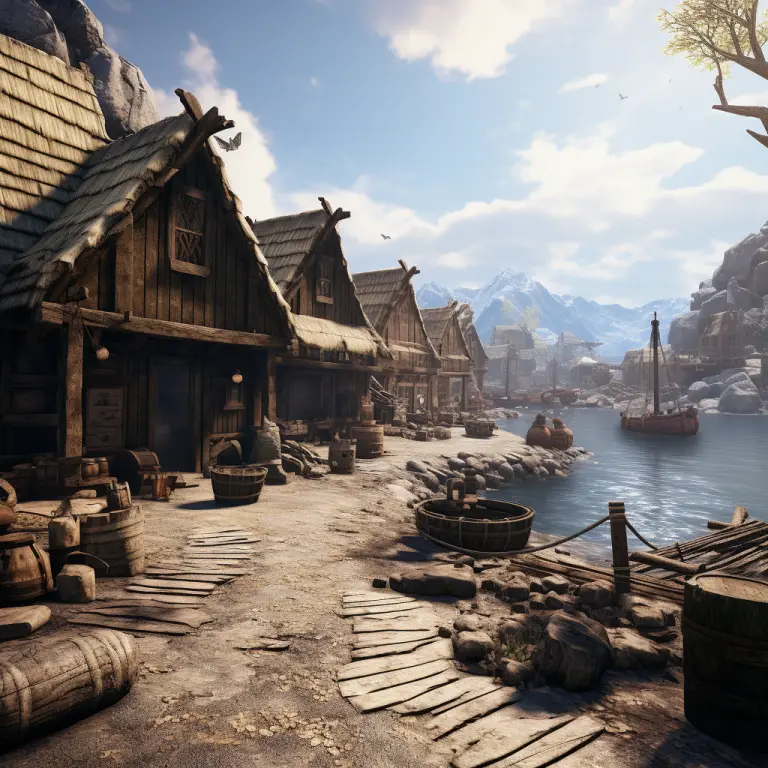Viking villages were settlements inhabited by the Norse people during the Viking Age, roughly from the late 8th century to the early 11th century. These villages were scattered across Scandinavia and areas where the Vikings explored, traded, and settled. They had a distinct social and economic structure.
In a typical Viking village, you would find longhouses, which were large communal buildings serving multiple purposes. They were used for living, storage, and as places for community gatherings. The longhouses often had a central hearth for cooking and heating.
Viking villages were usually situated near waterways for easy access to transportation and trade routes. The Vikings were skilled seafarers, and their villages were often close to the coast or rivers, facilitating both fishing and trading activities.
These communities were self-sufficient to a large extent, engaging in agriculture, animal husbandry, and craftsmanship. They produced their own food, clothing, and tools. The Vikings were also known for their metalworking skills, creating weapons, tools, and decorative items.
While there was a sense of community, Viking society still had social hierarchies. The village chief or chieftain held a prominent position and played a crucial role in decision-making. The villagers, in turn, had various roles, including farmers, fishermen, traders, and craftsmen.
Viking villages faced threats from external sources, such as raids from other Viking groups or neighbouring communities. As a result, defensive structures like wooden palisades and watchtowers were sometimes built around the villages for protection.
Overall, Viking villages were dynamic centres of activity, blending agriculture, trade, and craftsmanship in a harsh yet interconnected world. They were an integral part of the Viking way of life, reflecting both the challenges and resilience of this fascinating historical period.
Several Viking villages played significant roles during the Viking Age. Here are a few prominent ones:
Birka (Sweden): Birka was a key trading centre situated on the island of Björkö in Lake Mälaren, Sweden. It was a major hub for trade and served as a connection between the Baltic region and the wider Viking world.
Hedeby (Denmark): Located at the southern end of the Jutland Peninsula, Hedeby was a bustling trading settlement. It was strategically positioned along major trade routes and facilitated commerce between Scandinavia and the rest of Europe.
Kaupang (Norway): Kaupang, located in present-day Tjølling near Larvik, Norway, was one of the earliest urban centres in Scandinavia. It was a significant trading port, and archaeological evidence suggests a mix of local and international influences.
Jorvik (York, England): While not a traditional Viking village, Jorvik was a Viking settlement in England. The Vikings captured and renamed the city of York, turning it into a thriving trading center with a distinct Norse influence.
Ribe (Denmark): Ribe is often considered one of the oldest towns in Denmark and was a vital trading and economic centre during the Viking Age. Archaeological excavations have revealed a well-organized urban layout with evidence of trade and craftsmanship.
Kaupang (Norway): Kaupang, located in present-day Tjølling near Larvik, Norway, was one of the earliest urban centres in Scandinavia. It was a significant trading port, and archaeological evidence suggests a mix of local and international influences.
Reykjavik (Iceland): While not established during the traditional Viking Age, Reykjavik was one of the early settlements in Iceland. The Norse settlers, including Ingólfur Arnarson, founded Reykjavik around 874 CE.
These villages and settlements were key in shaping the Viking world, contributing to trade, exploration, and cultural exchange across Europe and beyond. Each being different, reflecting the diversity of Viking society and its interactions with neighbouring regions.



